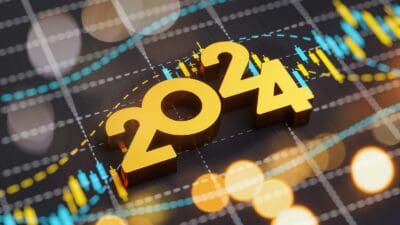It may seem strange to compare Astrazeneca (LSE: AZN) with Diageo (LSE: DGE) — the two stocks do not even belong to the same sector. However, there are quite a few similarities between them — both stocks are low-beta blue-chip companies that have been seeing earnings growth falter in recent years.
Historically, both stocks have delivered a reliable combination of income and capital growth, too. Astrazeneca has delivered a total return (that is, the rate of return with dividends being reinvested in the company) of 88% over the past five years, while Diageo has managed 49%.
Remember, though, past performance is no guarantee of future results.
Recent trading conditions
Diageo, the £47bn alcoholic beverages company, reported its interim earnings today and said that underlying EPS fell 4% to 51.3p in the six months to December 31. Although the company managed to generate a 1.8% organic growth in revenues, adverse currency movements and the disposal of non-core assets led operating profits to fall by £156m, to £1,717m.
Overall, trading conditions are challenging. The impact of adverse currency movements is largely out of the management’s control, but the company has been doing well at what it can control. It has delivered continued margin improvement and steady volumes growth. And, despite the earnings trend, free cash flow is growing, allowing Diageo to increase its interim dividend by 5% to 22.6p per share.
Astrazeneca’s earnings trend in recent years is in much worse shape. Underlying EPS has fallen by an annualised rate of 16.2% over the last three years, compared to 2.0% for Diageo, as the pharma company’s patent protection has expired on some of its “blockbuster” drugs. Ongoing launches on new treatments are just beginning to offset the trend in declining revenues, but have yet to have the same impact on earnings.
Looking forward, though, Astrazeneca’s revitalised portfolio of portfolio of investigational therapies should allow the company to emerge from its earnings slump. The pharmaceutical company has some 131 projects in our pipeline, with 15 in the late-stage of development.
We will know more about Astrazeneca’s trading performance when the company reports its full-year earnings on February 4.
Valuations
| Astrazeneca | Diageo | |
|---|---|---|
| Forward P/E | 15.8 | 21.3 |
| Prospective Dividend Yield | 4.4% | 3.0% |
| Adjusted Payout Ratio (2015) | 64% | 66% |
| 2-year Forecast Annualised EPS Growth | -6.0% | 4.3% |
Both companies have forward P/E ratios slightly ahead of the FTSE 100 average, but both also offer reasonably high levels of income with a dividend payout ratio of around two-thirds of underlying earnings.
Based on these valuation ratios, Astrazeneca seems to be the cheaper of the two. But, it is important to note that the company has kept its dividend frozen at $2.80 a year since 2011, and analysts expect it will remain frozen for at least another two years. With earnings forecast to decline by an annualised rate of 6.0% over the next two years, the pharmaceutical company is not exactly in a strong position to grow its dividend. Its dividend payout ratio is expected to climb from 64% in 2015, to around 74% by the end of 2017.
By contrast, Diageo’s growth prospects are more attractive. Its earnings outlook is brighter, with earnings set to grow by an annualised rate of 4.3% over the next two years. This should allow the company to maintain its a progressive dividend policy. So, whilst growth comes at a price, for me, it seems to be worth it.







